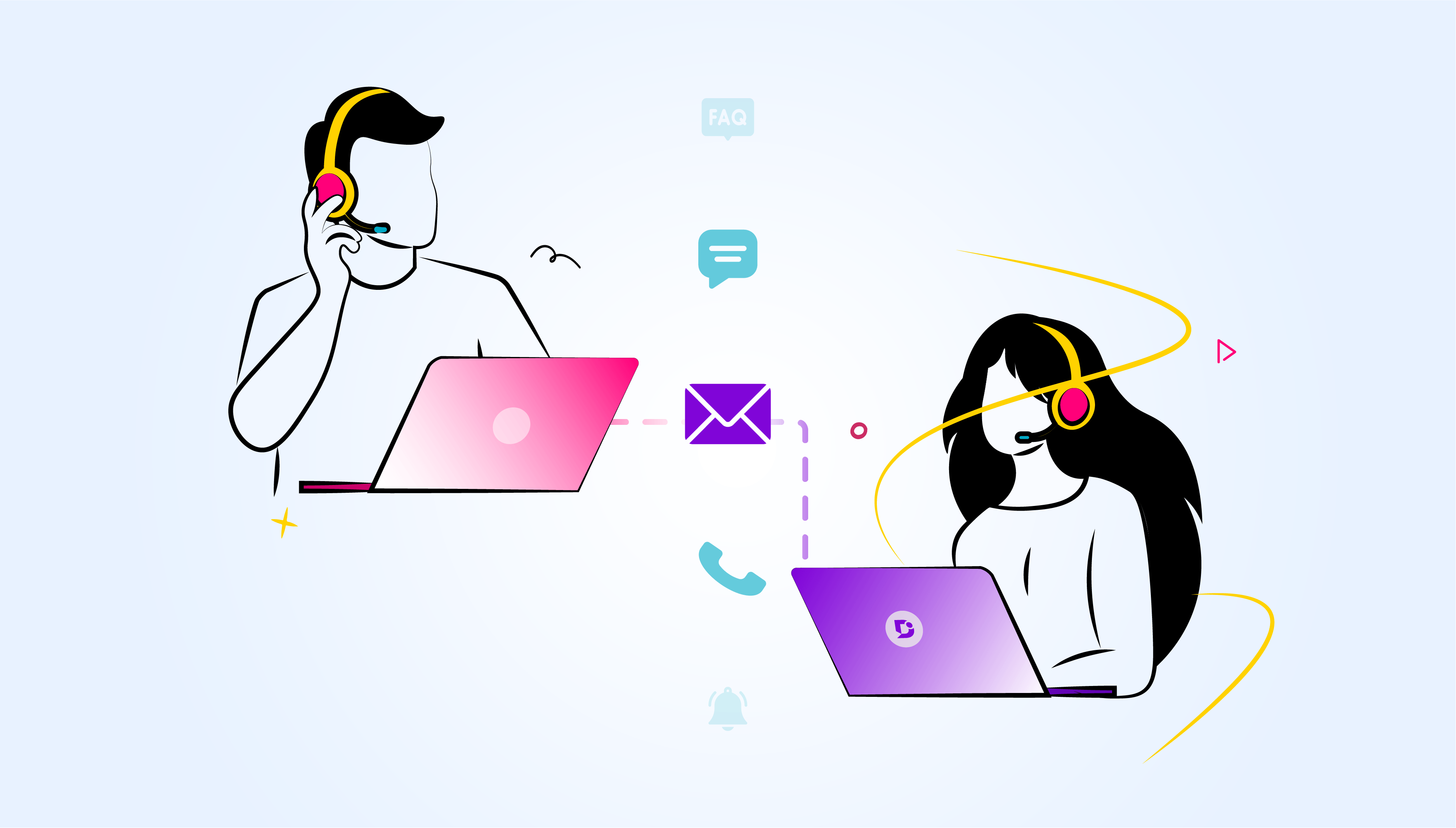Let’s talk from a customer’s perspective today! We’ll start with a situation.
Imagine yourself in a customer’s position. You start your journey on a website, browsing through products with excitement. But suddenly, you have a question and need help. You reach out through live chat and then get a call from another agent where you have to explain all your queries again. Would you prefer that mode of communication? Is that a convenient way for you?
Think! Because the scene of customer service has changed dramatically in recent years. Companies have now abolished the old ways and taken to modern solutions. And that’s where omnichannel customer service comes in.
Customers are just no longer satisfied with the basics. It’s the age of seamless, personalized, consistent, and interconnected experiences across multiple channels. According to a Google survey with users, it is surprising that 80% higher rate of incremental store visits is driven by omnichannel strategies adopted by the brand.
So, whether you’re a business owner or a customer support professional, join us in this comprehensive guide to omnichannel customer service. We’ll navigate the intricate paths of unlocking omnichannel customer service strategies to create an unforgettable customer journey that transcends channels and captivates hearts.
What Is Omnichannel Customer Self-Service?
Omnichannel customer self-service is like a superhero cape for businesses. It empowers customers to find answers to their questions and resolve issues independently through various channels.
Gone are the days of being tied to a single channel like email or phone. With omnichannel self-service, customers can choose their preferred communication channel: a website, mobile app, social media, chatbots, or even carrier pigeons (just kidding, but you get the idea). The key is to provide a seamless and integrated experience across all touchpoints.
Customers can start an interaction on one channel and continue it on another without repeating information or facing any interruptions.
For example, a customer support conversation might begin with Twitter, then continue with the DMs, and end up on a phone call—a completely personalized and synchronized connected experience. Customers don’t have to stop at each touch point and repeat what they said when the conversations started.
Besides, with technological advancements booming, customer expectations have significantly changed in the past years. And according to recent research conducted by Forrester, digital touchpoints will influence more than 57% of US retail sales, with B2B and B2C businesses abolishing siloed sales approaches for streamlined customer support and experience.
Benefits of Omnichannel Customer Self-service
Now that we know what omnichannel customer self-service is, let’s explore the excellent benefits it brings to the table. Brace yourself!
Personalized Customer Service Experience
Who doesn’t love a personalized experience? Omnichannel self-service allows businesses to tailor their support based on individual customer needs. By leveraging customer data and preferences, companies can create customized interactions that make customers feel like VIPs. It’s all about making them feel seen, heard, and understood.
So much so that 80% of consumers are more likely to purchase from brands that offer personalized experiences. This is why retail and wholesale firms are highly investing in personalization technology, such as machine learning.
Competitive Advantage
Standing out from the crowd is essential in a sea of businesses, all vying for customers’ attention. Adopting an omnichannel approach gives you a competitive edge. By offering a convenient and flexible service experience, you make it easier for customers to choose you over the competition. And when customers have a delightful experience, they’re more likely to stick around for the long haul.
A single negative experience can seriously affect customer retention, as 61% of customers would consider switching to a competitor after just one unfavorable incident.
With omnichannel customers’ survival, the chances of these are less likelier, as due to the seamless communication experience
Increased Customer Loyalty and Retention
Let’s face it: loyal customers are golden. They stick by your side through thick and thin. Besides customer loyalty and retention going hand in hand, omnichannel self-service plays a significant role in building customer loyalty and retention. Customers feel taken care of when you provide seamless access to information and quick solutions. And when they feel valued, they’ll keep coming back for more.
In fact, according to Forbes, companies with weak omnichannel strategies retain only 33% of their customers. In comparison, the ones with the best omnichannel customer engagement strategies turn 89% of buyers into loyal customers. It’s more of a win-win situation!
Boosting Revenue Growth
Cha-ching! We all love revenue growth. Here’s the thing: Happy customers spend more. When customers can easily find answers to their questions and resolve their issues in a jiffy, they’re more likely to make repeat purchases. Besides, on average, shoppers go through almost six touchpoints before making a purchase. Connecting those touchpoints and creating a seamless shopping experience is the base of omnichannel customer service.
This will not only make them your biggest advocates but also help in spreading the word about your fantastic service. In fact, according to Customer Think, companies with strong omnichannel customer engagement will see a 9.5% increase in annual revenue, while the weak ones will see only 3.4% growth.
So, implementing omnichannel customer self-service is like planting the seeds of revenue growth. Time to watch them bloom!
Also read: 5 Examples of Customer Self-Service Portal
Understanding The Difference Between Omnichannel And Single Channel Approaches
Ah, the age-old battle between omnichannel and single-channel approaches. Let’s break it down and uncover the key differences, shall we?
If we talk about the single-channel approach, picture a business focusing on one primary channel, such as phone support or email. While it may seem straightforward, this approach is like putting all your eggs in one basket. Sure, you may excel in that one channel, but what about the others? It’s like having a solo act that may dazzle on its own but lacks the synergy of a complete performance.
While with omnichannel, businesses embrace multiple channels like phone, email, live chat, social media, and more. It’s like a symphony, with each channel uniquely creating a unified and integrated customer experience. It’s about giving customers the freedom to choose their preferred communication method and ensuring a consistent and seamless journey across all touchpoints.
The key difference is basically in terms of engagement and flexibility. The single channel focuses on excelling in one area, while omnichannel creates a connected ecosystem that caters to diverse customer preferences.
So, which approach reigns supreme? Well, in today’s fast-paced, multi-channel world, customers crave options and personalized experiences. That’s where omnichannel shines. In fact, by 2023, the global omnichannel retail commerce market is projected to grow to $11.01 billion, with 60% of millennials expecting brands to provide consistent experiences across multiple channels.
So It’s time to step into the ring, and choose your champion. The choice is yours, but remember, adaptation is the key to success in a world where customer expectations constantly evolve.
How to Choose the Right Channel For Your Business
With organizations diversifying the types of digital channels they use to reach customers, let’s talk about choosing the right channel for your business to implement a killer omnichannel customer service strategy.
Implementing An Effective Self-Service Strategy
When it comes to self-service, it’s all about understanding your customers’ needs. Take a deep dive into their pain points and frequently asked questions. Are they often looking for product information, troubleshooting tips, or help with account management?
By identifying these common queries, you can create targeted self-service options that directly address their needs. Remember, the key here is to empower your customers to find answers independently.
In fact, nearly three-quarters of consumers prefer to use a business website or help center pages, FAQs being the common ones, to avoid the hassles of contacting a customer care representative.
Designing The User Experience In Mind
Nobody wants to feel like they’re navigating a labyrinth when searching for help. So, put yourself in your customers’ shoes and design a user-friendly experience. Make sure your self-service channels have a clean and intuitive interface.
Think: How can you make it seamless and enjoyable? Provide clear instructions and make it easy to search for information. Consider the channels that align with your target audience’s preferences. Are they more inclined towards live chat, social media, or traditional phone support?
63% of visitors are more likely to revisit a site that offers live chat, with 44% reporting that getting queries resolved during a purchase is one of the most important features a website should offer.
Remember, simplicity is the name of the game. Accessing the problem quickly and offering handy solutions will make your omnichannel customer service strategy worth it!
Building A Knowledge Base & FAQ For Customers To Access Quickly
Imagine your customers have burning questions, and they want answers pronto. A well-structured knowledge base and an easily accessible FAQ section are your secret weapons here.
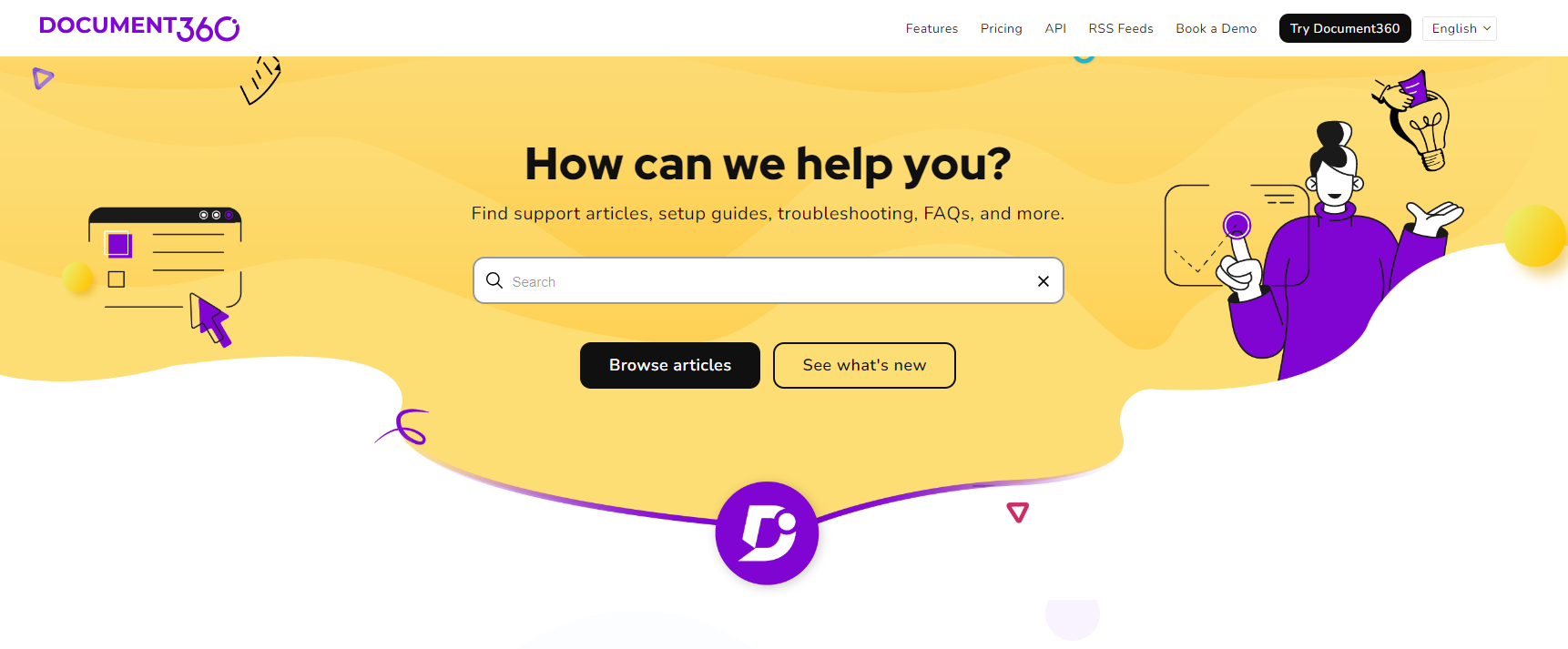
Compile the most frequently asked questions and detailed answers and organize them in a user-friendly format. This way, customers can find solutions at their fingertips without jumping through hoops. It’s like having a customer service encyclopedia available 24/7!
Organize your knowledge base with categories and subcategories, making it a breeze for customers to find what they need. Keep the content up to date and cover a wide range of topics to cater to different customer queries. Appoint professional customer service agents with extensive brand knowledge to leverage live chat to provide a positive customer experience. Remember, your goal is to provide a one-stop shop for information that’s just a click away.
Find out how Document360 can help you to reduce support tickets!
Book A Demo
Creating Automated Support Solutions To Reduce Resolution Times
In our quest to supercharge customer service and reduce resolution times, we cannot overlook the power of automated support solutions. By harnessing the capabilities of automation, we can provide lightning-fast responses and streamline the support process.
But how do we do it? Well, one way is by leveraging the wonders of technology, including chatbots, interactive voice response systems, and, yes, top social media analytics tools.
Creating automated support solutions can significantly reduce resolution times and improve customer satisfaction. For instance, implementing chatbots or interactive voice response systems can handle basic inquiries and route customers to the appropriate resources.
In fact, research shows that 80% of American consumers rate speed, convenience, and knowledgeable help as essential elements of a positive customer experience, and omnichannel customer service provides it all!
Also Read: Best practices in writing content for Generative AI-based chatbots
Ensuring All Channels Are Connected Through One Platform
Picture this: Your customers start their journey on your website, then switch to your mobile app and maybe even reach out on social media. Ensuring that all these channels seamlessly connect through one platform is crucial. That way, customers can transition between channels effortlessly without repeating themselves or starting from scratch.
It allows seamless information sharing, consistent customer data, and a unified experience across all touchpoints. Whether it’s integrating your website, social media accounts, or phone support, having a central hub brings it all together.
For instance, see how Target department stores offer omnichannel customer service through their website, mobile app, and physical stores.
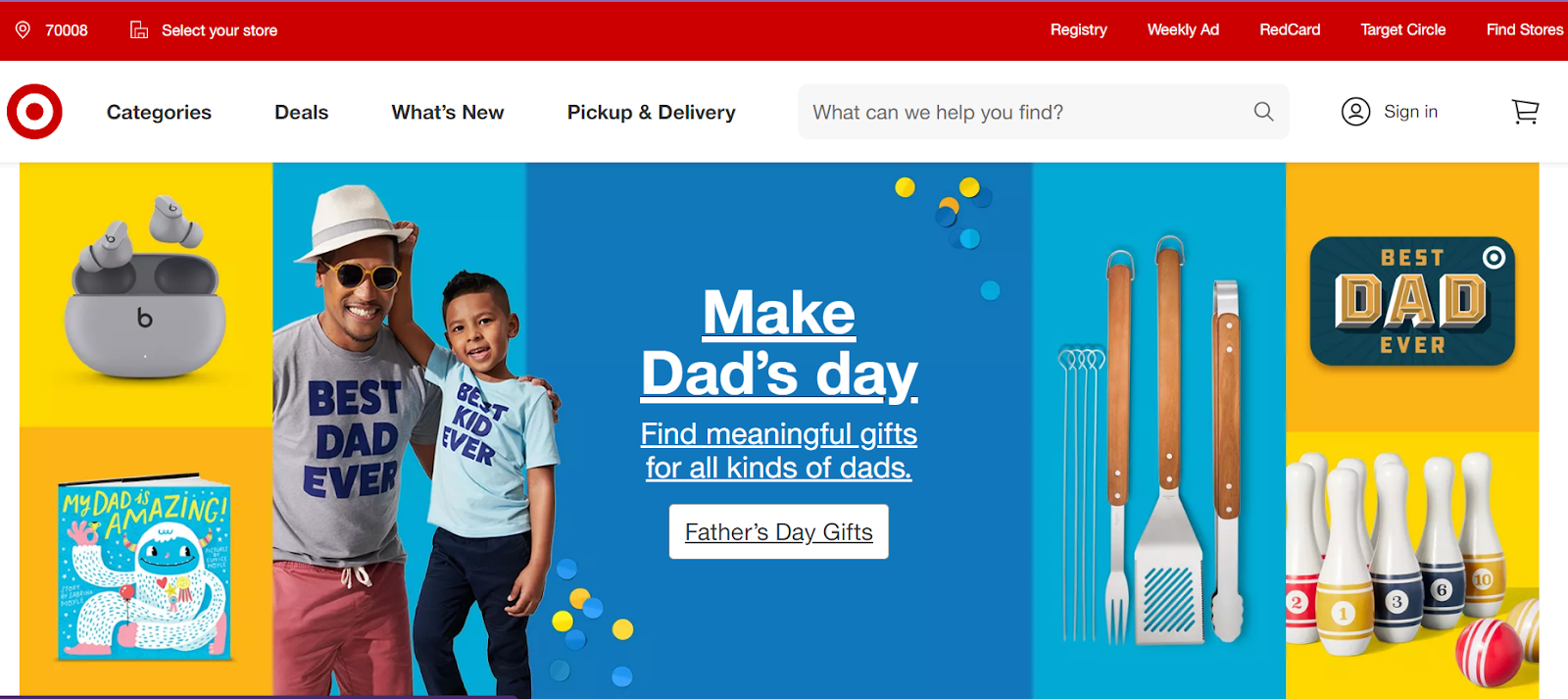

Source: Target
Thus by integrating all your customer service touchpoints, you create a unified experience that makes your customers say, “Wow, this is smooth sailing!”
Omnichannel Customer Service Examples
Now that we have navigated the best channels, it’s time for real-life examples of companies rocking the omnichannel customer service game.
1. Amazon
Amazon is the undisputed king of E-commerce. There is no doubt about that. When it comes to omnichannel customer service, Amazon sets the bar high.
While for an online experience, you can always synchronize your carts on the website with the mobile app, in offline mode, too, Amazon has introduced pop-up stores inside shopping centers and large retailers.
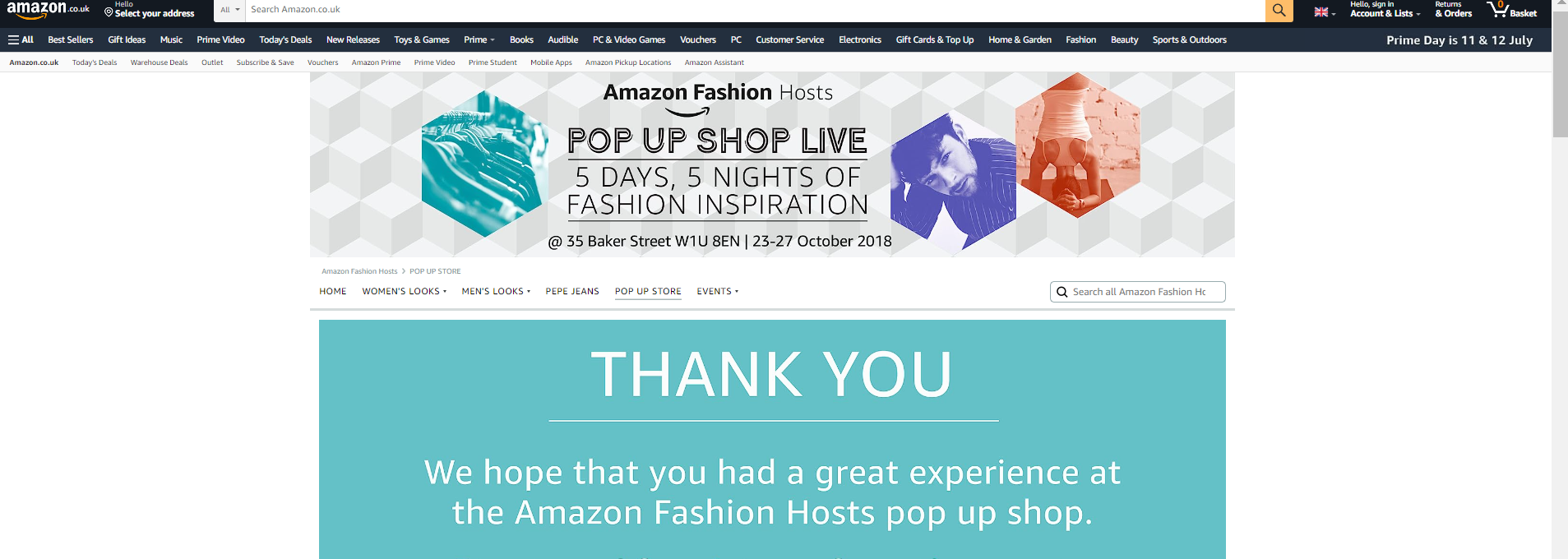

It has devised a unique offline shopping experience for customers to browse products and seek help from in-store advisors in real time. From stores exclusive to Kindle and Echo products, Amazon has even launched fashion pop-ups besides an excellent Amazon bar. These pop-up stores are such a success that Amazon aims to ensure continuity in the online and offline experience with a self-serve setup.
2. Starbucks
Ah, the aroma of freshly brewed coffee and the sound of your name being called out by a barista. Starbucks knows a thing or two about creating an omnichannel experience that’s as comforting as a warm latte.
Picture this: You’re on your way to work, running late as usual. But fear not! You whip out your smartphone, open the Starbucks app, and place your order in advance. By the time you arrive at the store, your perfectly customized drink is waiting for you. No, waiting in line, no fuss. It’s like having your personal coffee concierge!


But that’s not all! Starbucks has also nailed the omnichannel customer experience with its Starbucks card. This card can be used to purchase any Starbucks item and get rewards. It is perfectly linked to the mobile app, website, and in-store experience, which means a change to the card via one channel, instantly updated across others, along with reward points.
3. Nike
Just do it, they say. And Nike takes that mantra to heart when it comes to omnichannel customer service.
Let’s say you’re browsing Nike’s website, eyeing those sleek new sneakers. But wait, you’re not sure about the size or fit. No problem! Nike offers a nifty feature called “Find Your Fit.” It uses augmented reality (AR) technology to measure your feet and recommend the perfect size.
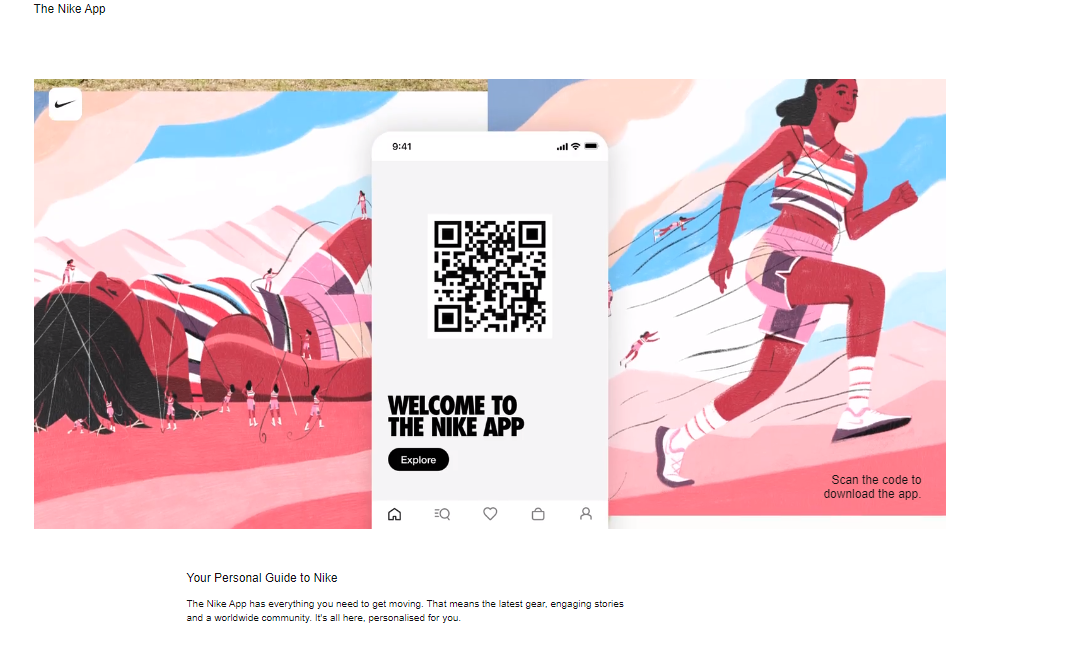

Say goodbye to those awkward shoe exchanges! And if you prefer the in-store experience, you can use the Nike app to reserve products, scan barcodes for additional info, and even schedule a try-on session. Nike truly understands that it’s all about giving customers choices.
4. Disney
Have you ever thought of planning a holiday with an omnichannel experience? Disney’s My Disney Experience app comes to the rescue.
From a multitude of choices—attractions, dining, and entertainment options, Disney also allows you to book FastPasses, make dining reservations, and check wait times for your favorite rides with the app. That’s right! You can book your entire holiday before even stepping on the plane. It even syncs up with your MagicBand—a wearable device that acts as your all-access pass to the park. The band can be used as guests’ park tickets, hotel room keys, payment methods, and even FastPass options.


These are just a few examples of brands that have embraced the power of omnichannel customer service. They’ve shown us that providing a seamless and connected experience across channels is not only possible but also essential in today’s customer-centric world. So, take a page from their playbook and let their success stories inspire you to create your omnichannel superhero journey!
Using AI Machine Learning In Customer Self-service
AI and machine learning are like the dynamic duo of customer self-service. They bring a whole new level of efficiency, personalization, and convenience to the table. Chatbots and virtual assistants powered by AI can not only provide instant support, learn from customer interactions, and improve their responses but also help businesses identify patterns, trends, and customer preferences.
They’re like customer service superheroes, available overnight to answer questions, provide information, and resolve issues. Not to mention generating automated responses based on predefined rules and templates and learning from past interactions. So, whether it’s a simple thank you or a detailed troubleshooting guide, these AI-powered bots can handle it all.
And here’s the best part: They do it with lightning speed! No more waiting hours or days for a response. With AI and machine learning, customers receive instant support, which is music to their ears (or, rather, their screens).
But hold on a second; you might wonder about the personal touch. Fear not! These systems are designed to mimic human conversations and can be customized to match your brand’s tone and voice. It’s like having an AI sidekick that speaks your language. It’s like having a personal shopping assistant that knows exactly what you need!
Besides, social media being the hub of endless conversations and interactions, allows AI and machine learning to gather insights about customer preferences, sentiments, and trends. By using social media automation tool, businesses can streamline their social media presence, automate responses, and proactively engage with customers. It’s like having a dedicated social media manager on autopilot!
Wrapping up
By now, it might be clear to you that going omnichannel seems to be one of the best ways to provide customer service for forward-thinking businesses.
Remember, omnichannel customer service is not just a buzzword—it’s a mindset. It’s about putting your customers at the heart of everything you do and creating exceptional experiences that set you apart from the competition. Thus, whenever you start conceptualizing your company’s omnichannel, start small. Think about the small nitty-gritty and figure out the ground-level features for your customers.
Start by thinking about which channels they prefer the most. How can you be consistent? Consistency is the most important, as 76% of customers expect consistent interactions across departments, and omnichannel service lets your organization offer a unified experience, no matter how they connect with you.
An intuitive knowledge base software to easily add your content and integrate it with any application. Give Document360 a try!
GET STARTED



